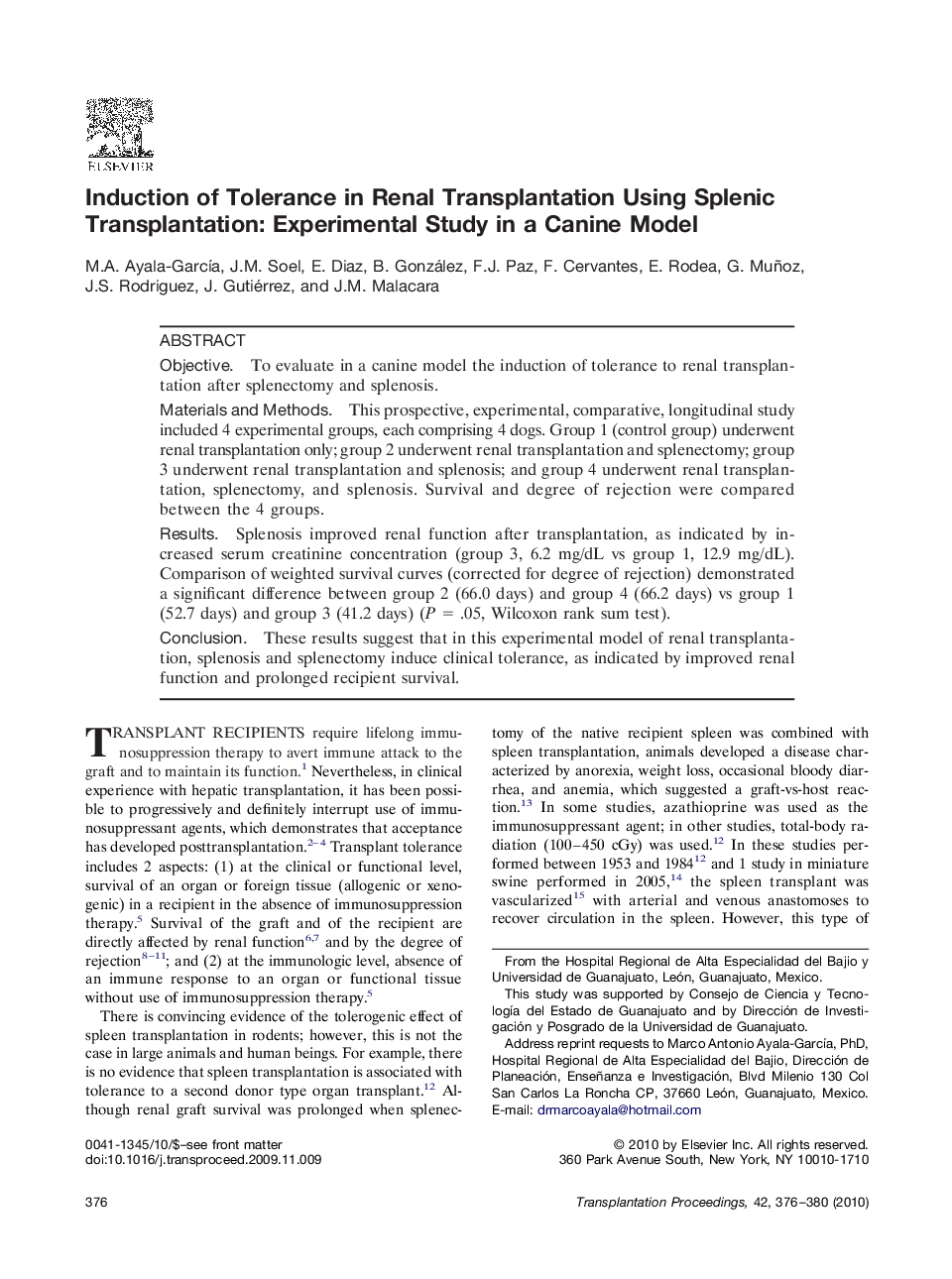| Article ID | Journal | Published Year | Pages | File Type |
|---|---|---|---|---|
| 4260892 | Transplantation Proceedings | 2010 | 5 Pages |
ObjectiveTo evaluate in a canine model the induction of tolerance to renal transplantation after splenectomy and splenosis.Materials and MethodsThis prospective, experimental, comparative, longitudinal study included 4 experimental groups, each comprising 4 dogs. Group 1 (control group) underwent renal transplantation only; group 2 underwent renal transplantation and splenectomy; group 3 underwent renal transplantation and splenosis; and group 4 underwent renal transplantation, splenectomy, and splenosis. Survival and degree of rejection were compared between the 4 groups.ResultsSplenosis improved renal function after transplantation, as indicated by increased serum creatinine concentration (group 3, 6.2 mg/dL vs group 1, 12.9 mg/dL). Comparison of weighted survival curves (corrected for degree of rejection) demonstrated a significant difference between group 2 (66.0 days) and group 4 (66.2 days) vs group 1 (52.7 days) and group 3 (41.2 days) (P = .05, Wilcoxon rank sum test).ConclusionThese results suggest that in this experimental model of renal transplantation, splenosis and splenectomy induce clinical tolerance, as indicated by improved renal function and prolonged recipient survival.
